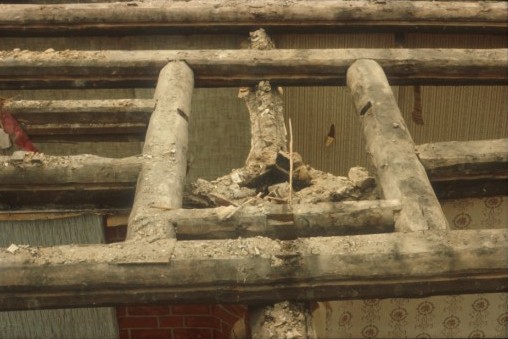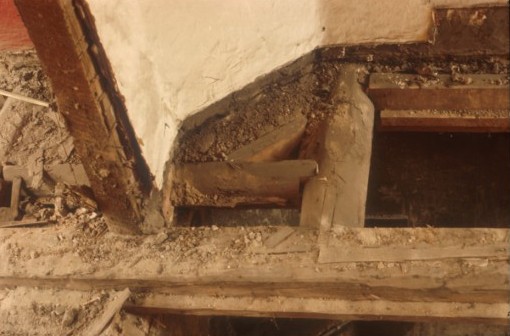

Trimming work in chimneys
Building types 1 and 2: 1850-1920
If a supporting beam around the chimney is decayed (due to e.g. rot or insects) and requires partial replacement, it is often necessary to support the joists and ceiling beforehand. Once the extent of the damage has been inspected and clarified, there are two possible ways to proceed:
1. Timber jointing
Jointing is carried out in the same way as the original jointing: i.e. lap-jointing (1) the trimmed joists using double lap or cross lap joints respectively at the wall plates. It is normal for just the crossbeams and bond timber around the chimneys to be decayed. These are replaced and joined with load-bearing beams/crossbeams using lap joints. All joints are secured using timber dogs, which align the wood smoothly on the top face.
2. Metal jointing
The jointing is carried out using framing anchors and annular nails/screws. Joist hangers and/or angle brackets are used on trimmed joists and angle brackets on wall plates. Normally only the crossbeams and bond timber are affected. Decayed crossbeams and bond timber are replaced, tightly intersected and joined using framing anchors and annular nails/screws. Joist hangers and/or angle brackets are used.
1) Two pieces of timber are joined so that one intersects the other, or they intersect each other, and their surfaces on one side lie in a plane. Source: Danske Bygningsudtryk (2001)
Photos: Jesper Engelmark